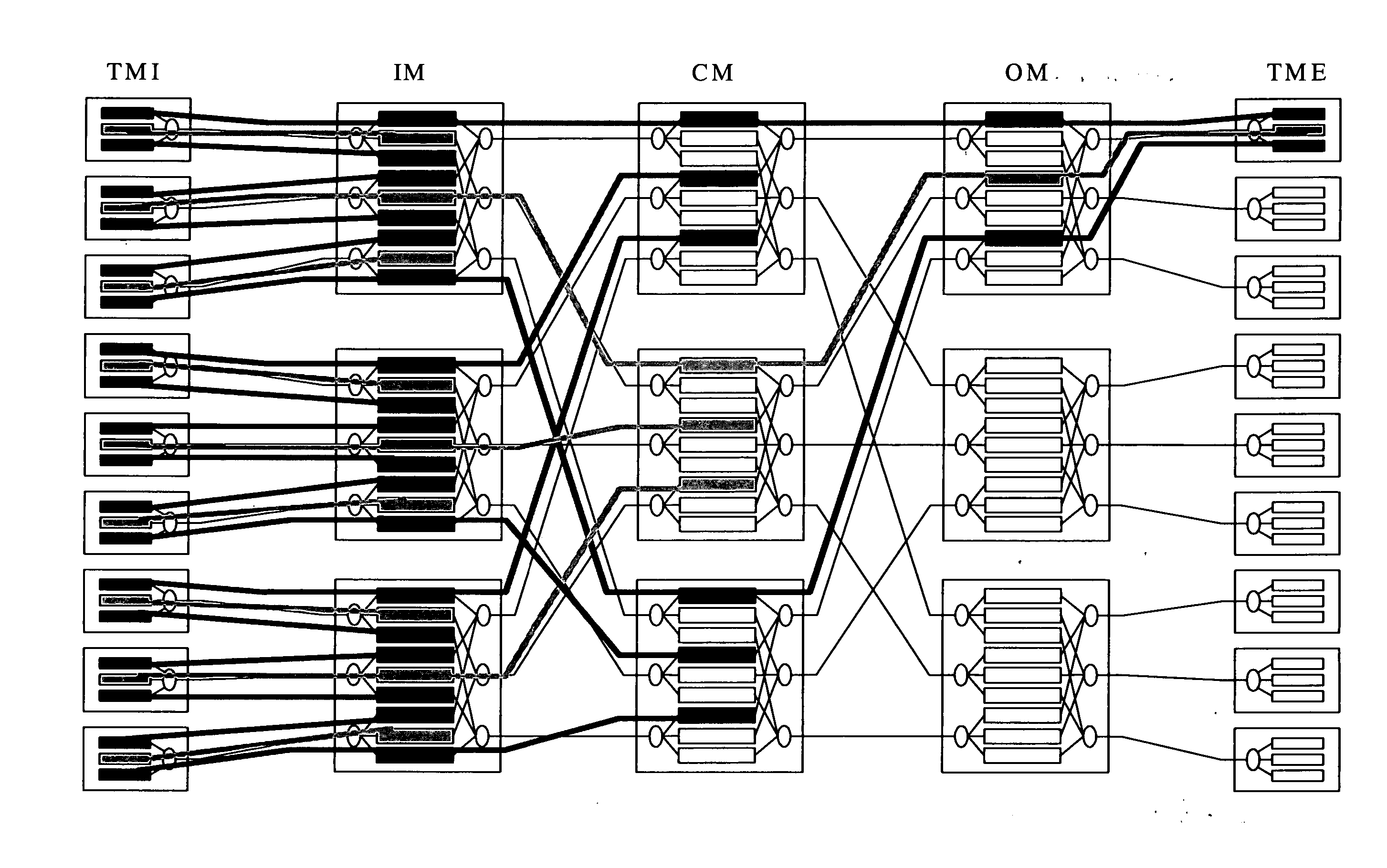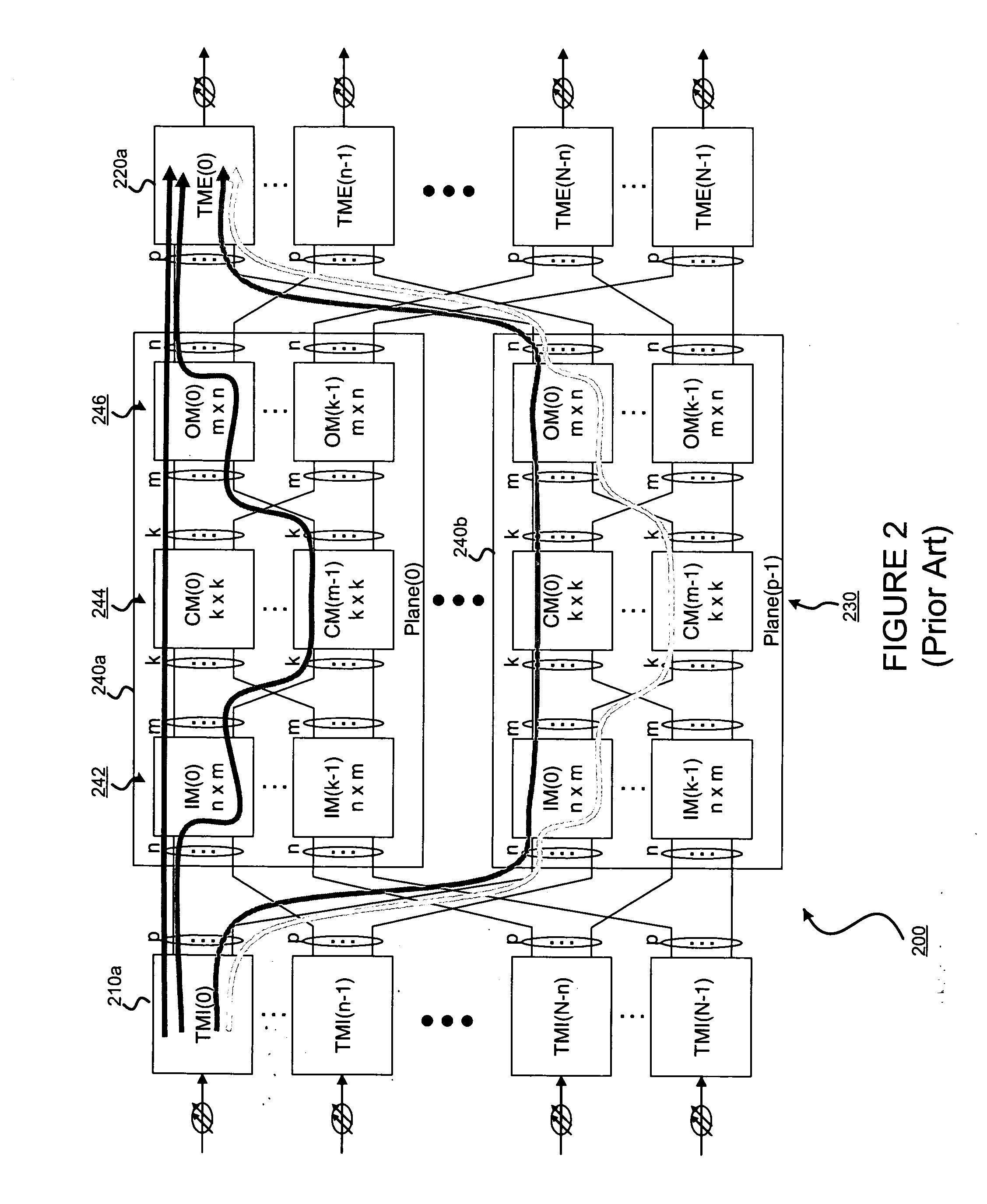Packet sequence maintenance with load balancing, and head-of-line blocking avoidance in a switch
a packet sequence and load balancing technology, applied in the field of communication, can solve the problems of significantly affecting the power consumption and cost of the system, the complexity and cost of building such a large-capacity router, and the inability to maintain packet sequences with load balancing, so as to reduce the memory size requirements of the table, reduce the cost of building such a large-capacity router, and reduce the effect of hol blocking
- Summary
- Abstract
- Description
- Claims
- Application Information
AI Technical Summary
Benefits of technology
Problems solved by technology
Method used
Image
Examples
Embodiment Construction
[0055] The present invention may involve novel methods, apparatus, message formats and / or data structures for avoiding packet re-sequencing with a reasonable number of buffers, while permitting load balancing, and / or for avoiding HOL blocking. The following description is presented to enable one skilled in the art to make and use the invention, and is provided in the context of particular applications and their requirements. Various modifications to the disclosed embodiments will be apparent to those skilled in the art, and the general principles set forth below may be applied to other embodiments and applications. Thus, the present invention is not intended to be limited to the embodiments shown and the inventors regard their invention as any patentable subject matter described.
[0056] In the following, abbreviations and letter symbols used in the specification are introduced in § 4.1. Then, exemplary embodiments of the present invention are described in § 4.2. Finally, some altern...
PUM
 Login to View More
Login to View More Abstract
Description
Claims
Application Information
 Login to View More
Login to View More - R&D
- Intellectual Property
- Life Sciences
- Materials
- Tech Scout
- Unparalleled Data Quality
- Higher Quality Content
- 60% Fewer Hallucinations
Browse by: Latest US Patents, China's latest patents, Technical Efficacy Thesaurus, Application Domain, Technology Topic, Popular Technical Reports.
© 2025 PatSnap. All rights reserved.Legal|Privacy policy|Modern Slavery Act Transparency Statement|Sitemap|About US| Contact US: help@patsnap.com



